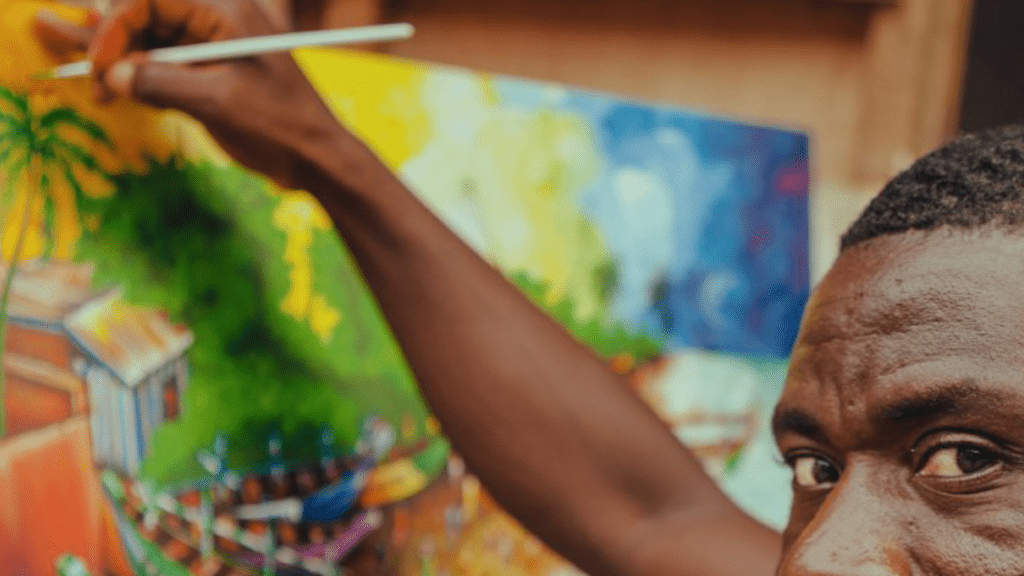Understanding the Art World Landscape
The art world is vast and varied, offering endless opportunities for creativity and expression. Knowing where to focus can make the journey both exciting and fulfilling.
Different Art Forms and Mediums
Art forms and mediums shape personal and professional paths in art. There are traditional methods like painting, drawing, sculpture, and newer techniques like digital art, mixed media, and installation art. For instance, many artists find satisfaction in digital illustration because it offers precision and versatility.
Others prefer sculpture for its tactile engagement and three-dimensional form. Understanding these forms and how they align with personal interests helps in finding a suitable niche in the art world.
The Business of Art
To thrive, artists must navigate the art market’s commercial aspects. Successful artists often excel in branding, marketing, and networking.
Galleries, online platforms, and social media serve as primary sales channels. Knowing which platform best suits the chosen art form, such as galleries for traditional paintings or online marketplaces for digital art, can enhance visibility and reach. Moreover, developing a solid artist statement and portfolio is crucial for standing out.
Identifying Your Passion
Identifying your passion in the art world requires a deliberate approach. To find what truly excites you, explore different artistic areas and draw from your experiences and inspirations.
Exploring Diverse Artistic Areas
Exploring diverse artistic areas lets you discover what resonates most with you. Experiment with traditional methods like painting and sculpture.
Try modern techniques such as digital illustration and installation art. Each medium offers unique challenges and rewards. Consider the different artistic disciplines:
- Painting: Oil, acrylic, and watercolor offer different textures and techniques. For example, oil painting allows for rich, vivid colors.
- Sculpture: Clay, stone, and metal each bring diverse possibilities. Stone carving demands precision, while clay modeling provides flexibility.
- Digital Art: Tools like Adobe Illustrator and Procreate open up new creative avenues. Digital art allows for intricate detailing and easy corrections.
- Mixed Media: Combining various materials can lead to unique expressions. Using found objects and traditional mediums together can create compelling works.
Discovering the spectrum of options helps pinpoint what aligns with your creative instincts.
Experiences and Inspirations
Your experiences and inspirations play a crucial role in defining your artistic niche. Reflect on past projects and moments that sparked creativity. Personal history and cultural background often influence your work. Consider these inspirational sources:
- Personal Life: Significant events or memories can guide your artistic voice. For example, a childhood memory can inspire a series of paintings.
- Nature: The natural world offers endless inspiration. Landscapes, flora, and fauna can influence your color palette and themes.
- Travel: Exposure to different cultures and environments broadens your artistic perspective. Traveling to art-rich destinations provides fresh ideas.
- Art History: Studying the works of past masters can inform and inspire your own approach. Learning about movements like Impressionism or Surrealism imparts valuable insights.
Identifying what deeply moves you ensures your art remains vibrant and authentic.
Developing Your Unique Style

Creating a unique style sets an artist apart. It’s essential that your artistic voice stands out and resonates with audiences.
Techniques and Expression
Mastering various techniques allows expressive freedom. Experimenting with different mediums sharpens skills. For example, blending acrylics and oils produces unique textures. Also, trying digital art software expands the creative toolkit. Consider each technique’s impact on conveying emotions and messages.
Case Studies of Renowned Artists
Studying famous artists reveals their unique styles. Frida Kahlo’s art blended surrealism and Mexican culture, which made her work distinct. Jackson Pollock used “drip painting” to break conventional barriers. Observing these artists can inspire finding one’s niche in the art world.
Navigating the Market
Understanding the art market’s dynamics helps artists position their work effectively and reach their target audience. It’s vital to grasp both conventional and digital avenues to thrive.
Building Your Brand
Creating a distinctive brand defines your artistic identity. This involves:
- Consistent Visuals: Use specific themes and colors across websites and social media to maintain visual consistency.
- Artist Statement: Write a compelling statement that conveys your artistic vision and passion.
- Online Presence: Maintain active profiles on platforms like Instagram and ArtStation, showcasing your portfolio.
- Professional Website: Create a professional site with galleries, a bio, and contact details. Integrate an e-commerce section if possible.
Connecting with Galleries and Collectors
Engaging with galleries and collectors expands your network. Follow these steps:
- Research: Identify galleries that align with your style. Visit gallery websites and review their portfolios.
- Networking: Attend art fairs and gallery openings. Introduce yourself to curators and artists.
- Portfolio Submissions: Submit tailored portfolios to galleries. Include high-quality images and an artist statement.
- Collector Relations: Engage with collectors via social media. Offer insights into your creative process and new projects.
Navigating the art market requires a blend of strategic branding and active networking, enhancing your visibility and credibility as an artist.
Maintaining Your Artistic Identity
Maintaining one’s artistic identity ensures authenticity and uniqueness in the competitive art world. It’s essential to stay true to your vision while evolving and adapting.
Balancing Trends and Originality
Balancing trends with originality secures both relevance and individuality. While following trends may attract attention, solely relying on them can dilute your unique voice. To blend them effectively:
- Identify Trends: Research current popular themes, mediums, or styles. For example, digital art and eco-friendly materials are trending.
- Adapt Selectively: Incorporate only elements that resonate with your core vision. For instance, if you focus on abstract art, integrate only those trending colors or techniques that enhance your original style.
- Maintain Core Elements: Preserve your signature techniques or subjects. If nature is paramount in your work, consistently include it regardless of market trends.
Continuous Learning and Adaptation
Continuous learning supports artistic growth and adaptation. The art world constantly evolves, so staying updated is vital.
Key strategies include:
- Workshops and Courses: Enroll in specialized workshops or online courses. Topics range from mastering new mediums to digital marketing skills.
- Networking Events: Attend art fairs, exhibitions, or seminars. These events offer exposure to emerging trends and industry standards.
- Feedback Loop: Seek and incorporate feedback from peers, mentors, or critics. Their insights help refine your style and stay innovative.
By balancing trends with originality and committing to continuous learning, you can maintain a distinct artistic identity while evolving alongside the art world.


